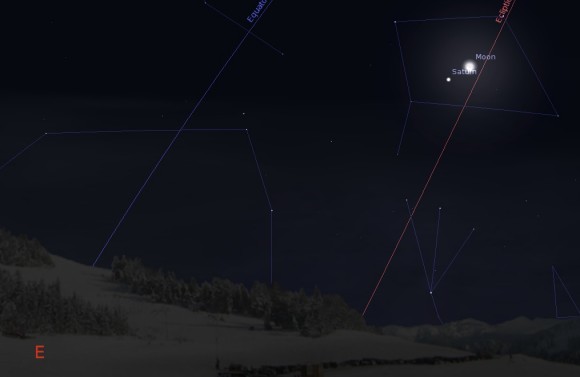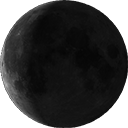Saturn and the waning crescent Moon rising to the SE at about 4 AM local on January 25th, 2014. Created using Stellarium.
Mark your calendars: the first in a series of interesting occultations of Saturn by the Moon for 2014 starts this weekend.
The year 2014 features 11 occultations of the planet Saturn by the Moon, and there are 23 total for 2014 of every planet except Neptune and Jupiter.
An occultation occurs when one foreground celestial object completely obscures another. Technically, a total solar eclipse is an occultation of the Sun by the Moon, although it’s never referred to as such. The term finds modern usage mainly for the blocking of stars and planets by the Moon. Very occasionally, an asteroid or planet can occult a distant star as well.
And yes, the modern astronomical term “occultation” traces its hoary roots back to the days when astronomy was intertwined with the pseudoscience of astrology. To this day, the term still makes some folks wonder if astronomers are secretly casting horoscopes. Trust us, you’re still on a solid astronomical footing to use the term “occultation.”




